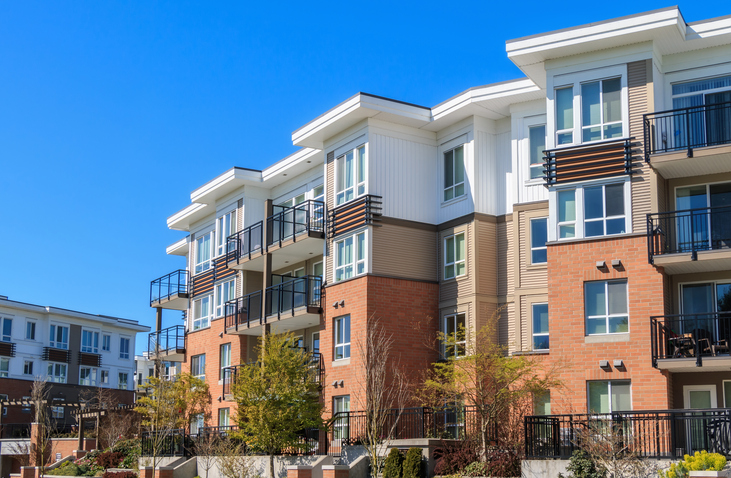Contractors Professional and Pollution Liability Coverage: A Gap-Filling Necessity!
Contractors’ Professional and Pollution Liability is the contractor’s coverage solution. Often referred to as either the Contractors Pollution and Professional Insurance, the Contractor’s Protective Professional Indemnity coverage, or simply “CPPI,” this multi-peril form specifically addresses and closes the majority of pollution and professional liability coverage gaps resulting from the limited breadth of protection provided by the CGL Coverage Part A. Now more than ever, pollution liability coverage is a win for even the smallest contractors.
|
Coverage Part A of the Commercial General Liability (CGL) policy is limited in scope, extending coverage to claims arising out of only bodily injury (BI) and/or property damage (PD). Couple Part A’s limited scope with the CGL form’s absolute pollution exclusion (“f.”) and expensive coverage gaps are created for most contractor risks. Contractors’ Professional and Pollution Liability is the contractor’s coverage solution. Often referred to as either the Contractors Pollution and Professional Insurance, the Contractor’s Protective Professional Indemnity coverage, or simply “CPPI,” this multi-peril form specifically addresses and closes the majority of pollution and professional liability coverage gaps resulting from the limited breadth of protection provided by Coverage Part A (these policies even address some coverage gaps in the business auto policy). Coverage Part A’s Bodily Injury and Property Damage Coverage Gap Commercial general liability policies extend protection when the insured contractor’s actions result in bodily injury or property damage to a third party. Obviously, this protection is subject to specific exclusions. Agents often stop with the CGL, believing the insured is adequately protected simply because the entity is not a “professional” (such as an architect or engineer). However, financial losses can be and often are caused by the actions (or inactions) of a “non-professional” contractor that do NOT result from either bodily injury or property damage. Consider the example of an HVAC contractor hired to design and install a system for a specialty manufacturing operation. Because the manufacturing process produces dangerous fumes or generates especially high temperatures or some other unusual effect, a specialized ventilating system is required. During testing, it is discovered that the newly-installed system is not adequate and must be removed and replaced, delaying the opening and use of the facility. There is NO bodily injury or property damage, therefore the cost to remove and replace the system is not covered by the CGL. Likewise, the loss of income resulting from the delay is not covered by the CGL. This loss is solely the result of an error in either the design or installation. All costs associated with this incident are paid from the HVAC contractor’s resources (out of their own pocket). Construction projects are not “neat and tidy” operations with clear delineations of duty between professional services and construction duties (“non-professional” duties). As the project progresses and evolves, subcontractors may advise upper tier contractors regarding unexpected changes or how to solve unexpected problems. Such “advising” may cause financial loss that is NOT the result of bodily injury or property damage, but the result of an error in judgment. Financial losses arising out of a contractor’s errors or omissions are not within the CGL’s coverage grant. When there is no bodily injury or property damage, separate coverage is required. The Pollution Exclusion Gap Exclusion “f.,” referred to as the “absolute pollution exclusion,” removes coverage for most pollution losses. However, the exclusion contains exceptions that make it far less than absolute (unless the Total Pollution Exclusion (CG 21 49) is attached). The VU recently produced a webinar detailing the lack of absoluteness of the “absolute” pollution exclusion. (A transcript of the webinar is also available.) Several contractor-specific exceptions are found in the “absolute pollution exclusion,” but the protection is limited. Contractor-specific pollution exceptions (giving back coverage) include:
Remember, these pollution-related coverage grants apply only if: 1) the exclusionary wording mimics Insurance Services Office (ISO) wording; or 2) the Total Pollution Exclusion endorsement his not attached. If proprietary wording is used, these coverage exceptions cannot be assumed; and if the CG 21 49 is attached, there is NO pollution coverage. Even if the insured has this limited pollution coverage, important losses and costs are still excluded.
Too many gaps exist for the contractor to depend on the CGL (or even the BAP) for protection. The ONE Policy That Fills Both Gaps Contractors’ Professional and Pollution Liability (“CPPI”) coverage fills most of the gaps created by the limited breadth of Coverage Part A and the application of the pollution exclusion (even with the “give-back” exceptions). Four key coverages are combined into most versions of the CPPI:
Financial harm arising out of professional services conducted by or on behalf of the insured is covered by this coverage part. Activities that may be considered “professional services” extends far beyond what is traditionally considered. “Professional service” can include design work, engineering work, construction management operations, or even services performed as part of the construction process such as shoring or dewatering. Some policies specifically define “professional service” and some refer back to the activity listed in the policy’s declarations page. If the “professional services” definition points back to or references the activities listed in the declarations page, care must be taken to assure the description of operations is correct. If all activities are not considered and listed, there may be coverage gaps (“intent” doesn’t hold up well in court). To apply the professional liability coverage part to the HVAC contractor introduced earlier, the contractor’s improper design or improper installation of the ventilation system, examples, an error or omission in a professional service. The cost to remove and replace the system plus the loss of income suffered by the building owner are covered by the professional liability coverage part. Key provisions related to professional liability coverage include:
Protective liability is found in one of two places – depending on the carrier; within the professional liability coverage language or, less commonly, extended in a separate coverage grant. Protective liability extends vicarious liability protection that:
Returning to the exampled HVAC contractor: If the design work had been done by an engineer, the engineer’s professional liability should respond first. However, if the engineer’s coverage had lapsed, was not sufficient, or contained an exclusion applicable to the loss – the insured’s protective liability coverage would pay the amount owed to the injured party (up to policy limits). Key features of protective liability essentially mirror those applicable to professional liability with two exceptions:
Mitigation expense, or “mistake coverage,” is just what it sounds like – coverage for the cost of fixing a problem before it becomes a claim. The impetus for the inclusion of mitigation expense coverage is cost. It is much cheaper to fix the problem during the construction period upon discovery of the “mistake” than when the construction is complete. Some policies use the term “Rectification,” but the concept is the same. Key components of this coverage include:
The CPPI extends contractors’ pollution liability coverage for two types of pollution claims: 1) job site or operations pollution coverage; and 2) pollution damage emanating from the insured’s location. Job Site/Operations Pollution Coverage. Unlike the limited pollution protection extended within the unendorsed CGL, the job site pollution coverage is rather comprehensive. Claims covered by most forms include:
This section extends coverage to a pollution released within a building (like the CGL), outside the building, or during transportation. Further, this policy section covers a release that occurs after the work is complete – completed operations pollution coverage. Insured’s Location Pollution Coverage. Pollution claims emanating from the insured’s location are almost totally excluded by the CGL – other than an exception for the release of a pollutant from an HVAC system or smoke or fumes from a hostile fire. However, claims for the release of a pollutant from an insured’s location are covered by the CPPI. Claims covered by this section essentially mirror the types of releases extended protection under the job site pollution coverage with a few key differences:
Both job site and the insured’s location coverages are subject to the same specific provisions which include:
Some carriers extend pollution coverage on an occurrence basis; but a few provide coverage on a claims-made and reported basis. A review of the form is necessary. When the form extends coverage on an occurrence basis, wording in the policy limits coverage to just one policy period to avoid the possibility of multiple policies being called upon to respond (avoiding the stacking of limits). The one-policy-period limitation is accomplished using specific terminology, such as:
Coverage forms extending pollution coverage on a claims made basis follow the “normal” claims made protocol:
CPPI forms are proprietary, there is no “standard” CPPI coverage form. When reviewing coverage forms, consider the following:
Most if not all carriers offering CPPI place great importance on the application completed by the insured. Standard property and casualty (P&C) applications are considered “representations,” meaning that the information provided in the application is deemed to be accurate “to the best of the insured’s knowledge.” This allows room for unintended, non-material misinformation without the loss of coverage. However, CPPI applications are held to a higher standard. CPPI applications are considered “representations with dependence.” This means that the insurance carrier depends on the accuracy of the information in agreeing to issue the policy. The application may even become part of the policy, especially when there is a question regarding the professional service being insured. What is the difference between an application that is a “representation” and one that is “representation with dependence?” When the application is a “representation,” only “material” concealment, misrepresentation, or fraud can result in the denial of a claim. When the application is a “representation with dependence,” any misinformation is or can be grounds for a claim denial. Because of the possibility for a claim denial, especially in light of the known injury exclusion, polling letters are recommended. All managers, directors, officers, and/or insurance managers should be polled, in writing, to confirm that no known incidents that could lead to a claim have occurred. Defense costs are within the limits of coverage and reduce the amount available to pay the loss. Some carriers MAY allow a separate defense limit to be purchased by endorsement for an additional premium. Commonality exists among the various policy forms regarding the definition of “bodily injury.” Most if not all CPPI coverage forms define “bodily injury” to include: physical injury, sickness or disease, death, mental anguish, emotional distress, or shock. However, there are two additional results found in some CPPI forms but missing from others:
Building-related illness is not synonymous with “sick building syndrome.” The term building-related illness applies when symptoms of a diagnosable illness or condition are identified and can be attributed directly to airborne building contaminants. This can include illness such as Legionnaire’s disease or conditions such as allergic reactions. The addition of this term may expand the coverage grant. At least, if not more than, half of the policy forms include “building-related illness” within the definition of bodily injury. Associated medical and environmental monitoring appears to greatly expand the breadth of coverage under the definition of “bodily injury.” Because the phrase is not a defined term, it must be defined and interpreted as would a reasonably intelligent person not within the insurance, legal, or environmental profession. Based upon such a reading, the policy pays to: 1) medically monitor (over time) the person or persons suffering bodily injury; and 2) monitor the environment in which the injury or condition occurred to assure the toxins, chemicals, or other pollutants are not present in sufficient levels to cause harm. Only certain carriers appear to include “associated medical and environmental monitoring” with the definition of bodily injury. Consent to Settle (The “Hammer” Clause) CPPI forms, like most professional lines coverage forms, contain a “consent to settle” clause – often referred to as the “hammer” clause. The consent to settle clause allows the insured to forbid the insurance carrier from settling a claim without the insured’s permission. However, if such permission is withheld, the insured can be “hammered” by the decision. One of two types of “hammer” clauses are found in most CPPI forms: the “full hammer” (for lack of a better term); or the “modified hammer.” The Full Hammer. Essentially, the full hammer states that if the insured refuses to consent to settlement, the most the insurance carrier will pay is the amount for which the claim could have been settled plus the defense cost incurred at the point of the settlement acceptance. All costs in addition to this are borne solely by the insured. For example, the carrier could have settled the claim for $100,000, but the insured refuses to settle, choosing rather to fight the charges in court. In court, the jury awards $200,000. If the “full hammer” is in effect, the insurance carrier would pay the $100,000. The additional $100,000 would be paid by the insured (ignoring all other claims expenses). The Modified Hammer. The modified hammer does not punish the insured as extensively as the “full hammer” wording. Modified hammer consent to settle clauses are often referred to as a “coinsurance clause” (not to be confused with property coinsurance) because the insurance carrier agrees to split with the insured the amount that exceeds the accepted settlement plus defense costs to that point; essentially making the insured a “coinsurer” on all amounts over the settlement amount. Using the above example again, the carrier could have settled the claim for $100,000, but the insured refuses to settle, choosing to fight in court. In court, the jury awards $200,000. If the “modified hammer” applies a 50 percent coinsurance provision, the insurance carrier would pay the $100,000 initial offer plus 50 percent of the amount over $100,000, or $50,000 in this case (ignoring all other claims expenses). The insured would have to pay $50,000 out of pocket – not including the additional defense costs. Some carriers put a little velvet on the hammer and try to incentivize the insured into settling by offering a reduction in the self-insured retention (SIR) if the insured consent to settle. At least one CPPI carrier offers a 10 percent SIR reduction if the insured consents to settle. The “full hammer” is by far the most common consent to settle provision used in CPPI forms. However, a few CPPI providers do offer a “modified hammer.” Knowing which hammer will hit the insured is important to know before deciding which carrier to use. Who Needs CPPI and Who Are the Markets? Coverage gaps and a much broader application and understanding of “professional services” means every contractor needs CPPI coverage. Industry literature states that CPPI coverage is designed or tailored to meet the needs of:
As you can tell, this list leaves out very few contracting risks. Most contractor risks need CPPI protection. Upcoming Webinar CPPI was the topic for the VU’s November 15, 2017, webinar. Last Updated: January 9, 2026 |
Copyright © 2025, Big “I” Virtual University. All rights reserved. No part of this material may be used or reproduced in any manner without the prior written permission from Big “I” Virtual University. For further information, contact nancy.germond@iiaba.net.









